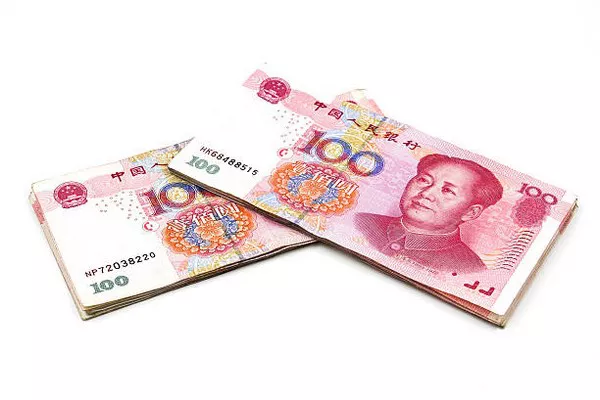The Chinese yuan, also known as the Renminbi (RMB), stands as a pivotal currency in the global economic landscape. Its significance transcends borders, impacting international trade, investment, and monetary policy. As China continues to assert itself as a leading economic powerhouse, understanding what underpins the value of its currency becomes imperative for economists, investors, and policymakers alike. In this article, we delve into the intricate fabric of the Chinese yuan’s backing, exploring its historical roots, modern manifestations, and the implications for the global financial system.
Historical Context:
To grasp the foundations of the Chinese yuan, we must journey back through the annals of Chinese economic history. Traditionally, the yuan was pegged to the U.S. dollar, providing stability in a volatile financial environment. However, in recent decades, China has embarked on a path of economic liberalization and internationalization, leading to significant reforms in its monetary system.
Since the late 1970s, China has gradually shifted away from a centrally planned economy towards a more market-oriented model. This transition has been accompanied by efforts to diversify the yuan’s backing and reduce its dependence on external currencies. Central to this endeavor has been the accumulation of foreign exchange reserves, primarily denominated in U.S. dollars, euros, and other major currencies.
Foreign Exchange Reserves:
At the heart of the Chinese yuan’s backing lies its substantial foreign exchange reserves. As of [latest available data], China boasts the world’s largest reserves, exceeding [amount] trillion U.S. dollars. These reserves serve as a bulwark against currency volatility, providing the People’s Bank of China (PBOC) with the necessary firepower to stabilize the yuan’s value in the global market.
The composition of China’s foreign exchange reserves reflects its strategic approach to currency management. While the U.S. dollar remains dominant, comprising a significant portion of reserves, China has diversified its holdings to mitigate risks associated with currency fluctuations and geopolitical developments. Euro, Japanese yen, British pound, and other reserve currencies feature prominently in China’s portfolio, underscoring its commitment to prudence and diversification.
Gold Reserves:
In addition to foreign exchange reserves, gold plays a crucial role in bolstering confidence in the Chinese yuan. Historically revered as a store of value, gold enjoys universal appeal as a hedge against inflation and currency depreciation. Recognizing its intrinsic worth, China has steadily increased its gold reserves in recent years, signaling its long-term commitment to safeguarding the yuan’s stability.
As of [latest available data], China ranks among the world’s top gold-holding nations, with reserves surpassing [amount] metric tons. The strategic accumulation of gold not only enhances the yuan’s credibility but also reinforces China’s aspirations for a more prominent role in shaping the global monetary system. Moreover, gold reserves provide a degree of autonomy, shielding China from the potential fallout of geopolitical tensions and economic uncertainties.
Domestic Economic Strength:
Beyond external reserves, the Chinese yuan derives substantial support from the underlying strength of the domestic economy. China’s remarkable economic growth trajectory, fueled by rapid industrialization, urbanization, and technological innovation, underpins the yuan’s status as a formidable currency on the world stage.
A robust manufacturing sector, burgeoning consumer market, and vast pool of human capital contribute to China’s economic resilience and vitality. Moreover, prudent fiscal policies, infrastructure investments, and structural reforms bolster investor confidence in the yuan’s long-term prospects. As China continues to transition towards a consumption-driven economy, the yuan’s intrinsic value is poised to strengthen further, cementing its position as a global reserve currency.
Financial Infrastructure and Reform:
In tandem with economic development, China has undertaken ambitious reforms aimed at modernizing its financial infrastructure and liberalizing its capital markets. Initiatives such as the Belt and Road Initiative (BRI) and the establishment of international financial centers like Shanghai and Shenzhen showcase China’s commitment to fostering financial integration and connectivity on a global scale.
Moreover, the internationalization of the yuan, marked by the issuance of offshore yuan-denominated bonds (dim sum bonds) and the expansion of offshore yuan clearing centers, underscores China’s aspirations for a more prominent role in global finance. By enhancing the yuan’s liquidity and accessibility, China aims to reduce its reliance on external currencies and promote the international use of the yuan in trade and investment transactions.
Challenges and Considerations:
Despite strides in enhancing the yuan’s backing and international standing, China faces a myriad of challenges on its path to currency prominence. Structural imbalances, demographic shifts, and geopolitical tensions pose significant headwinds to sustained economic growth and financial stability. Moreover, concerns regarding capital controls, transparency, and regulatory frameworks warrant careful attention to mitigate risks and safeguard the yuan’s credibility.
Furthermore, geopolitical dynamics, trade tensions, and monetary policies of major economies can exert profound influences on the yuan’s value and trajectory. As such, policymakers must adopt a proactive approach to navigate uncertainties and promote sustainable economic development.
Conclusion:
In conclusion, the Chinese yuan’s backing encompasses a multifaceted array of factors, ranging from foreign exchange reserves and gold holdings to domestic economic strength and financial reforms. As China continues to ascend as a global economic powerhouse, the yuan’s role in the international monetary system is poised to expand, shaping the dynamics of global finance in the decades to come. By fostering prudent policies, embracing financial innovation, and fostering international cooperation, China can realize its vision of a stable, resilient, and internationally recognized currency in the form of the Chinese yuan.


